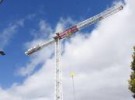Why is bamboo used for scaffolding in Hong Kong? A construction expert explains
At least 44 people have died and more than 270 are missing after a major fire engulfed an apartment complex in Hong Kong’s Tai Po district. The fire, which swept through multiple high-rise towers, is still burning.
The exact cause of the blaze, which broke out just before 3pm local time on Wednesday, is still unknown. Hong Kong Police have arrested three construction company executives on suspicion of manslaughter.
The apartment blocks are 31 stories tall. Opened in 1983, they were undergoing renovations at the time of the blaze, and were covered in bamboo scaffolding and green protective mesh.
Bamboo scaffolding has been a feature of the city for centuries. But why? The answer is part history, part engineering and part economics.
But the recent tragedy has sharpened the focus on fire safety, and when and where bamboo should be used.
Bamboo is a fast-growing grass with hollow, tube-like stems (known as “culms”). Those tubes give it a high strength-to-weight ratio. A pole is light enough to carry up a stairwell, yet strong enough, when braced and tied correctly, to support platforms and workers.
Crews lash poles together in tight grids and tie them back to the buildings with brackets and anchors. Properly designed, a bamboo scaffold can resist wind and working loads.
© The Conversation






















 Toi Staff
Toi Staff Sabine Sterk
Sabine Sterk Gideon Levy
Gideon Levy Tarik Cyril Amar
Tarik Cyril Amar Stefano Lusa
Stefano Lusa Mort Laitner
Mort Laitner John Nosta
John Nosta Ellen Ginsberg Simon
Ellen Ginsberg Simon Gilles Touboul
Gilles Touboul Mark Travers Ph.d
Mark Travers Ph.d Daniel Orenstein
Daniel Orenstein
